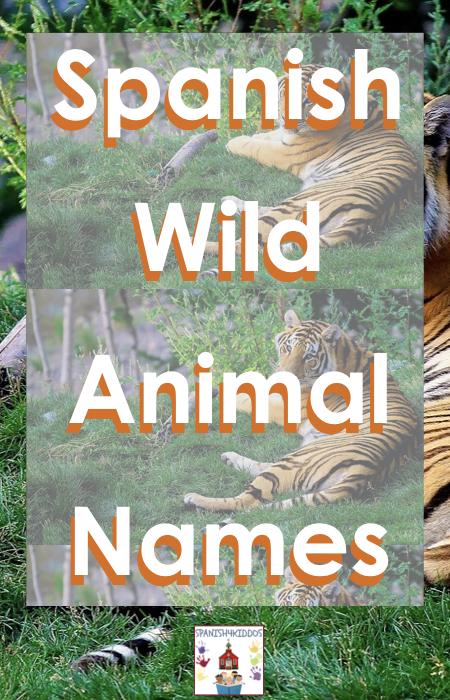
Wild animal names in Spanish is a terrific way to increase Spanish vocabulary. Many children associate seeing wild animals in zoos or conservation centers.
So, why not spend time to teach children the Spanish terms? With a few dual language lessons, you'll be able to incorporate Spanish names in themes and curriculum.
Animal Themes for Lesson Planning
Do you take a moment in the school year to use a theme? For instance, ideas of a zoo, safari, and jungles are fantastic teaching strategies to use with lessons.
Those times are perfect for children to use and recall Spanish vocabulary. In addition to learning Spanish terms, you can add learning about habitats, food, conservation, reading, and writing.
With one theme, you can easily tie in wild animal names in Spanish to climate and habitats. For example, parrots prefer humid climates and flourish in that type of environment. Altering their habitats or water resources disrupts their living conditions. In that way, young learners acquire knowledge of Spanish vocabulary.
Assimilating terms in this manner increases information retention. When you search for lesson planning materials, seek those that generate more than curiosity.
Learning materials that use specific standards in reading and writing, as well as general science, support you in more than vocabulary. Now that's a valuable resource to have in the classroom and at home.
Wild Animal Names in Spanish
- elephant = elefante
- tiger = tigre
- giraffe = jirafa
- lion = león
- monkey = mono
- rhinoceros = rinoceronte
- parrot = loro, papagayo, cotorra
- zebra = cebra
- jaguar = jaguar
- cheetah = chita
- koala = koala, coala
- crocodile = cocodrilo
- alligator = caimán, yacaré, aligátor
- snake = serpiente, culebra, víbora
- hippopotamus = hipopótamo
- ostrich = avestruz
- vulture = buitre
Wildlife Term Distinction
Perhaps, the question may come up. Many children may ask why some animals are called wild and not pets. Take those student-directed questions as a useful opportunity to develop their knowledge.
As a result, children may see that most homes have pets like dogs, cats, or fish. However, do wildlife make good pets? Of course, this idea is an excellent time to define the difference between wildlife and domesticated animals.
Explain that wild animals hunt for food and have a learned behavior to associate habitat with survival. On the other hand, dogs, cats, and fish are animals you take care at home. So, wild animals would not make great pets.
Similar to farm or forest animals, wild animals require specific conditions to live. These and other questions may come up as they learn more about wild animal names in Spanish. These student-directed inquiries are the excellent moments to open up to group discussion, including preschoolers and kindergarteners.

